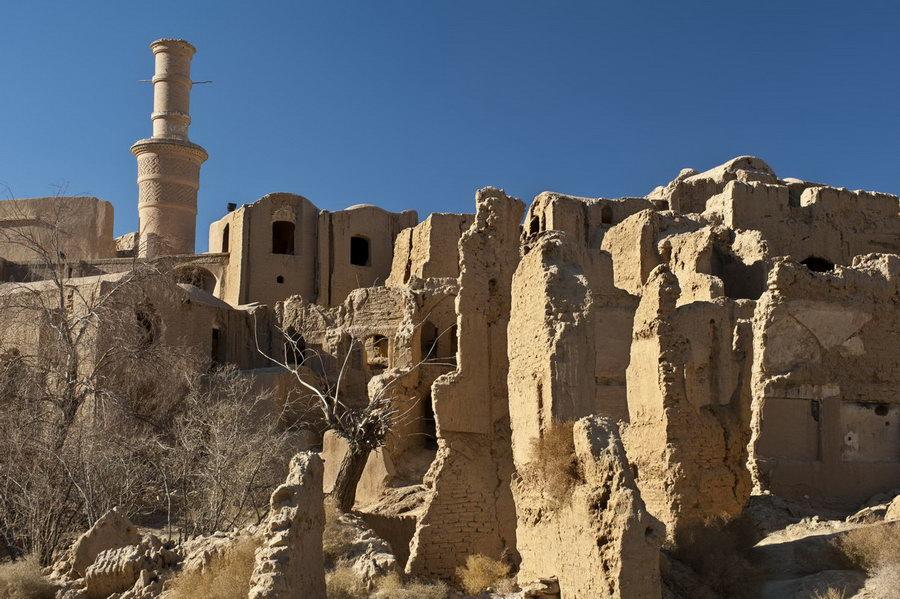Kharanaq village
Kharanaq village is located near the city of Ardakān (Yazd region) and dates back to 4500 years ago. It, (whose name means place where sun rises), consists of these main historical buildings:
-the residential fortress in adobe and mud that covers an area of 1,1 hectares which has six surveillance towers with 80 houses with two, three or more floors, two ancient water mills that are 140 years old (inside and outside outside the fortress).
-the historical hammam relating to the qajara era with two parts, the small hammam (for women) and the large hammam (from morning to night reserved for women and from evening to morning for men), both with all the elements typical of the complete Iranian hammam such as the entrance, the vestibule, the frigidarium, the myandar or tepidarium, the bayyeneh, (central area of the sarbineh or frigidarium, located in a lower area of the dressing room, covered by a large dome and equipped with a bathtub), the calidarium, the khazineh (small room with hot tub, adjacent to the garmkhaneh or calidarium), the furnace and the calidarium.
-a caravanserai related to the Sassanid period with a central courtyard and 4 timcheh covered and open.
-a cistern (in the village Sāghand-a village of Kharānaq) dating back to the year 1318 of the lunar Hegira attributed to the Shah Safavid Abbas I.
-a bridge with a stone-concrete base relating to the Parthian era with Sassanian and Byzantine architecture, 40 meters long and 5,7 meters high with the function of transferring water from one part of the river to the other.
-a large mosque (jāme'h) of adobe and mud dating from the age between the eighth and tenth centuries of the lunar Hegira, with a square colonnaded hall, pavilions around and a hossenyeh.
-a three-storey oscillating minaret with defensive function, a lighthouse or watchtower with a height of 15 meters, one of the three oscillating minarets of Iran.
- the small mausoleum called the mud and adobe Mashadak, place of prayer and accommodation of Imam Rezā (A) during the journey from Medina to Marv (relative to the year 585 of the lunar Hegira).
-the religious building Mazār Bābā Khādem (servant of Imam Reza) with the celestial dome.
Among the other things to see in the village of Kharānaq we mention the following:
-the siphon in stone and concrete 30 meters long next to the bridge used for irrigation of the surrounding agricultural fields.
-the deep cavities dug by hand at the edge of the river and near the bridge (as a refuge for travelers, not)
-the ancient cemetery with a morgue in mud and adobe, domed rooms and particular rooms called parde o zardu as a temporary burial place for the deceased who were to be transferred to another location.
- Shams Ābād village, an abandoned village with ancient Sasanian architectural style stone and plaster buildings where the remains of a fire temple are said to have been found.
-the ruins news, four square-shaped buildings with destroyed ceilings, testimony to the architectural style of the Sassanid period.
The village of Kharānaq, once considered a stopping point on the way for traders and travelers, is today one of the tourist destinations of Europeans in Iran.





